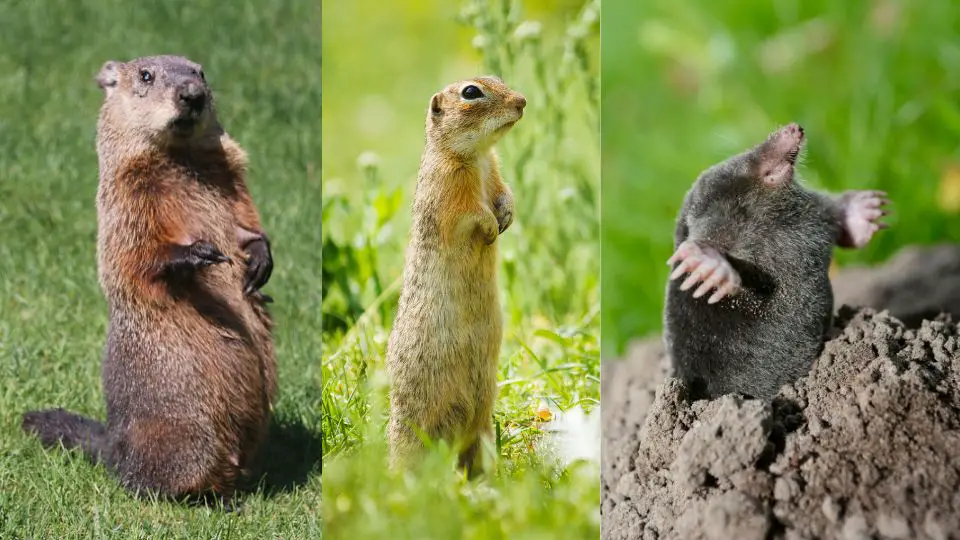Gophers, groundhogs, and moles are all burrowing rodents. Even though they have some physical traits and habits in common, they are distinct animals. Groundhogs are larger than gophers and moles. Other distinct differences are that gophers have visible teeth and moles have a pointed snout.
Gopher vs Groundhog vs Mole
| Gopher | Groundhog | Mole |
| Spends most of its life underground | Spends most of its life above ground | Spends most of its life underground |
| Belongs to the family Geomyidae | Belongs to the family Sciuridae | Belongs to the family Talpidae |
| Eats tubers, plant roots, and bulbs | Eats plants, flowers, and vegetables | Eats earthworms, insects, and grubs |
| Lifespan of up to three years | Lifespan of up to six years | Lifespan of up to six years |
| Stores food in its burrow and cheek pouches | Does not store food | Stores food in its burrow |
| Found in North America and Central America | Found in North America | Found in North America, Europe, Asia, Africa, and Australia |
| Lives in woodlands, forests, and plains | Lives in woodlands and plains | Lives in woodlands, grasslands, and sandy areas |
| Visible yellow teeth | No visible teeth | No visible teeth |
| Dark or light brown fur | Tan or brown fur | Gray, brown, or golden fur |
| About 8 inches long | About 20 inches long | About 7 inches long |
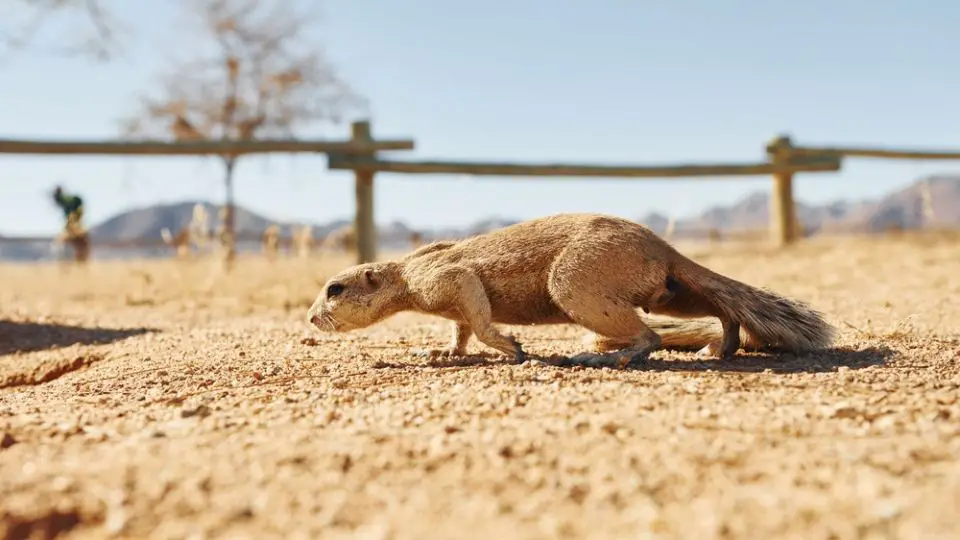
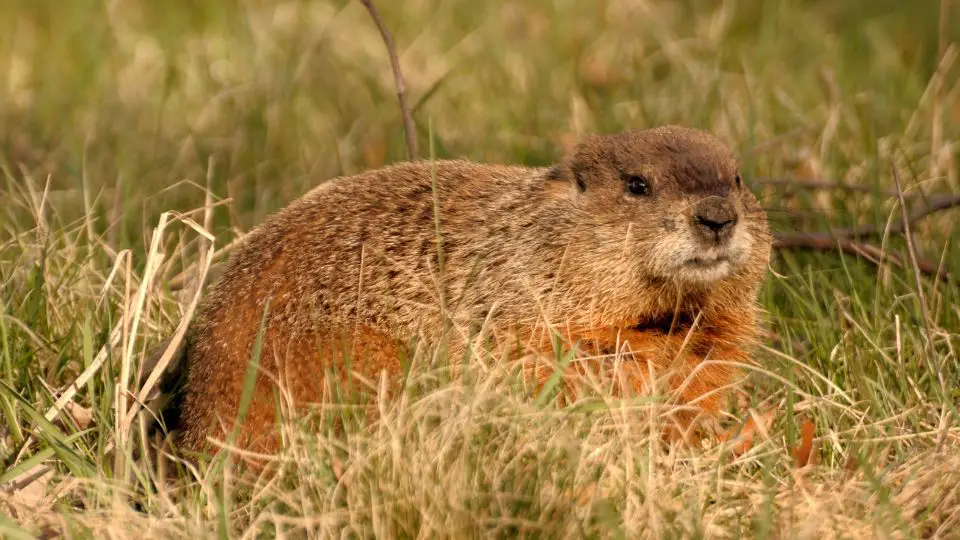
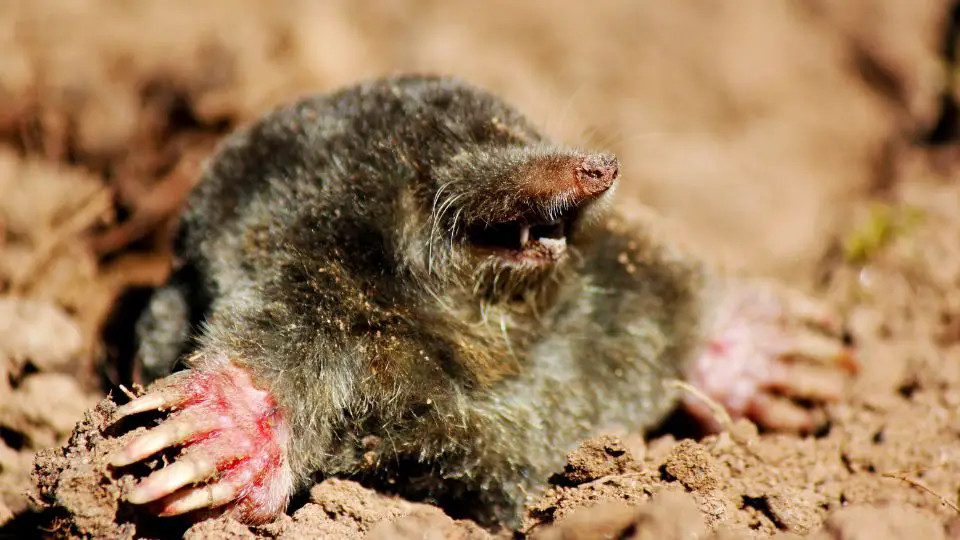
How do you tell the difference between a mole and a gopher?
Gophers tend to be larger than moles. Gophers can weigh up to 2 pounds, while moles weigh only about 4.6 ounces (0.25 pounds). There are more physical differences between these critters that help us tell which is which.
Moles have a pointed snout that gophers don’t have. Moles have large paws with six fingers. Gophers have four large incisors that are visible even when their mouth is closed. Although both critters have small eyes, moles’ eyes are so small that they appear to be absent. Gophers have small ears, while moles lack external ears.
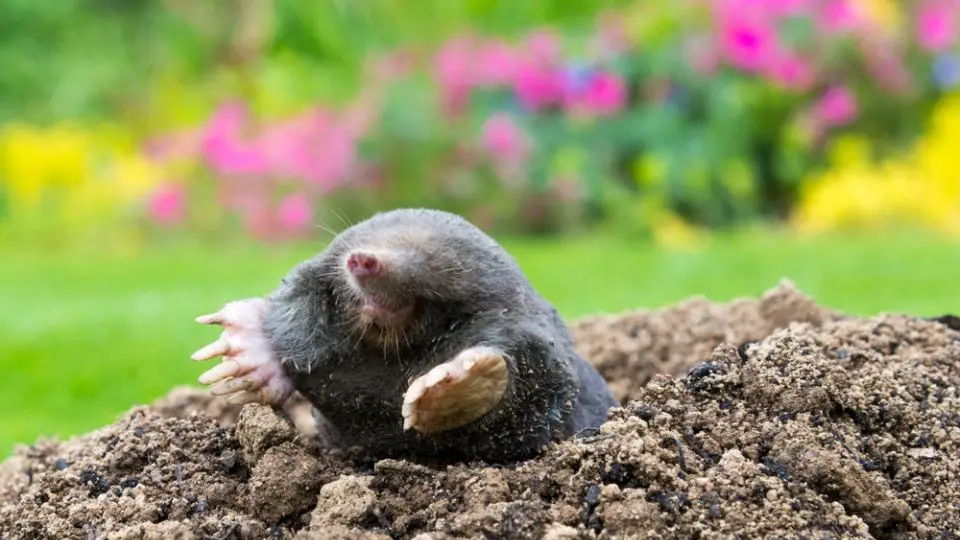
You can use the types of holes that moles and gophers dig to know the difference between the two pests. While moles and gophers both create burrows, their holes are different. They both make holes in the ground as entry points to their burrows. Gopher holes are about 10-20 inches in diameter.
The gopher is inside its burrow if the hole is covered with loose dirt. Mole holes are typically about 2 inches in diameter. Mole mounds are cone-shaped and often referred to as molehills. Moles create surface tunnels, but gophers create extensive tunnel systems extending six feet underground.
Moles spend most of their life above ground, while gophers spend most of their life underground. Therefore, you are more likely to see a mole than a gopher.
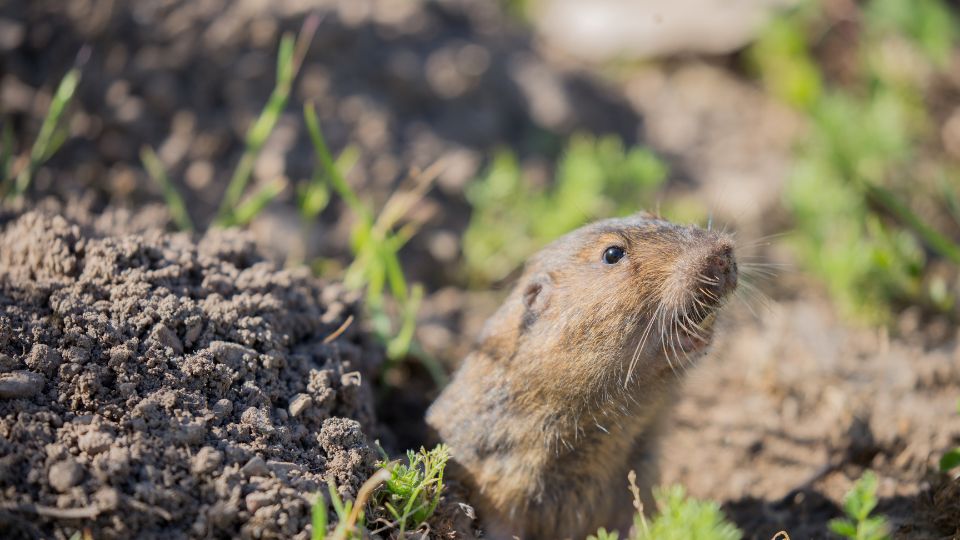
How do you tell the difference between a groundhog and a gopher?
The key difference between a groundhog and a gopher is their size. Groundhogs are significantly larger than gophers. Groundhogs weigh about 8 pounds, while gophers weigh about 2 pounds.
Gophers have visible cheek pouches, where they get their common name of pocket gophers. These large cheek pouches give their faces a round look. Groundhogs have slender faces. Another main difference in appearance is that groundhogs have brown or black feet, but gophers have pink feet.
Groundhog tails are shorter, wider, and furrier than gopher tails. Gopher tails are almost hairless. Gophers have teeth that are always visible, while groundhogs’ teeth aren’t seen when their mouths are closed.
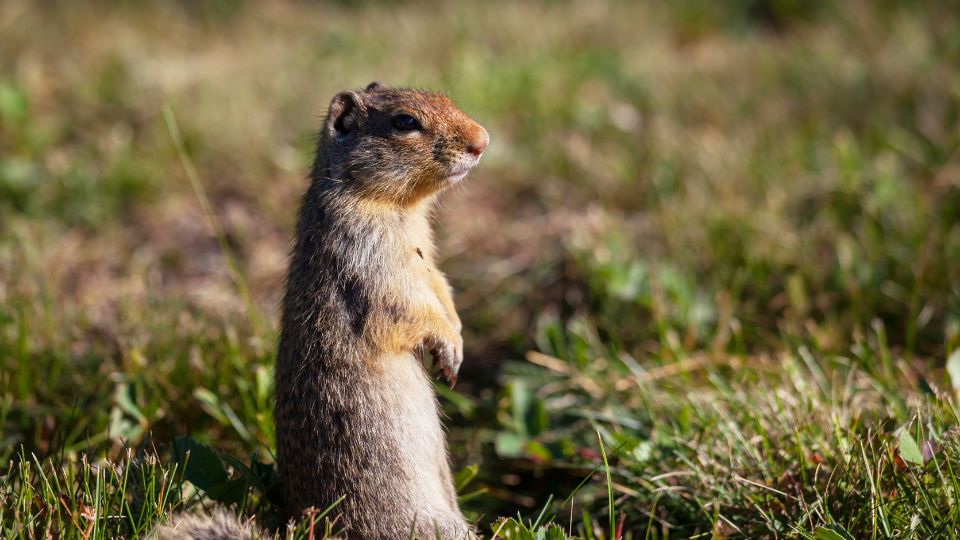
Groundhogs and gophers both create burrows, but the types of burrow systems they create have some differences. Groundhog holes are usually about 7 inches in diameter. Gopher holes are generally about 20 inches in diameter. Mounds of dirt surround both gopher holes and groundhog holes.
However, the piles of dirt around gopher holes are larger than the piles around groundhog holes. The dirt piles around groundhog holes are usually crescent-shaped. Unlike gophers, groundhogs mostly live above ground, so they are more common to see than gophers.

